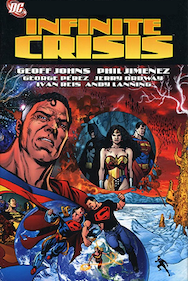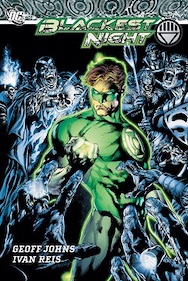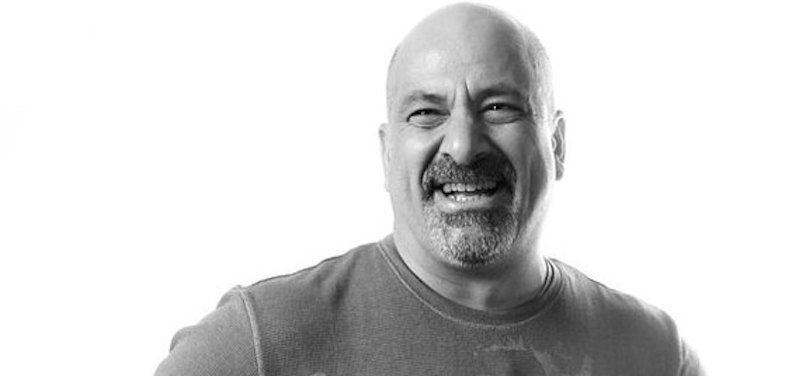Earlier today, it was reported that Dan Didio, co-publisher of DC Comics, was no longer with the company. Didio has been the public face of the company for more than 15 years, joining DC Comics in 2002 as vice president of editorial, before becoming vice president – executive editor in 2004. In 2010, he was named co-publisher of DC Comics along with artist Jim Lee.
In the time that Didio has been in charge of the editorial direction of DC Comics, I’ve had seven jobs and lived in 12 apartments in three different states.
As head of DC Comics, Didio was in charge of the editorial direction and tone for some of the most well-known characters in the world. Under his leadership, the publishing company took a lot of risks – some of which paid off, some didn’t – over the last 18 years. He’s rebooted the universe several times, killed off a number of characters, brought back many others and was a guiding hand for a lot of big events.
There may be people celebrating his dismissal from the company, with their own personal reasons for disliking Didio. But every time I heard an interview with him, or attended a panel that he was hosting or even ran into him out in the wild, Didio seemed to have boundless passion for the characters he stewarded and his job as head of the company. There was no doubt that he loved his job – and the properties he controlled – even if some of his decisions were questionable (I’m looking right at the NEW 52 for that one!).
There has been a lot I’ve loved about DC Comics over the last 18 years – dating back to the first book where Didio was credited as a writer. I really enjoyed his take on the Conner Kent Superboy (which started on issue 94 and lasted til the book’s cancellation with number 100). It can be hard to narrow it down to just 5, but these are some of my favorite DC Comics things under Dan Didio.
Infinite Crisis (2005-2006)

This is a big one, and I’m putting the build-up and aftermath to Infinite Crisis under one big umbrella.
Infinite Crisis – written by Geoff Johns with art from a staff of legends including Phil Jimenez, George Perez, Jerry Ordway and Ivan Reis – was an epic 7-issue miniseries that saw the pre-Crisis Earth-2 Superman and Lois Lane, along with the Alexander Luthor of Earth-3 and Superboy of Earth-Prime, return to the main Earth, disappointed in the way things had gone since Crisis. The event featured a lot of death and destruction, but it also had a lot of great moments, including a heart-to-heart between the main Batman and Earth-2 Superman, and the heroes rallying to take down Earth-3 Luthor and Superboy-Prime.
But Infinite Crisis was so much more than the 7-issue miniseries. The one-shot special that kicked everything off – with MAX LORD killing Blue Beetle Ted Kord – was a phenomenal introduction to what was to come. It also featured four 6-issue miniseries that built up to the event – The OMAC Project, Day of Vengeance, The Rann-Thanagar War and Villains United – that put rarely-used characters in the driver’s seat.
As a gimmick to tie in to Infinite Crisis, all the books published by DC Comics jumped 12 months ahead with little-to-no explanation, allowing writers to make some changes to the stories they were telling and take some chances narratively, with each book labeled “One Year Later” so readers knew what was going on. That missing year was somewhat detailed in the weekly miniseries 52, which appropriately ran for 52 issues.
The weekly miniseries was a pretty major accomplishment – the book managed to never miss a week. Co-written by Johns, Greg Rucka, Grant Morrison and Mark Waid and overseen by Keith Giffen, 52 featured a ton of B- and C-string characters and how they made the world safe while Superman, Batman and Wonder Woman were taking a break from heroism.
The storytelling for this whole project is so detailed and included so many different facets that it could have fallen apart at any time. It’s a credit to everyone involved – including Didio – that it managed to stay on point.
Blackest Night (2009-2010)

To be fair, Geoff Johns is instrumental in a lot of the successes DC Comics had in Didio’s early years, including the return to prominence of Green Lantern Hal Jordan. After a far-reaching space epic in the Sinestro Corps War, Johns took the ring-slinging to everyone in the DC Universe, as the Black Lanterns Corps attacked Earth, turning dead heroes (and heroes who died but came back) into mindless killers feeding off emotions. The story got pretty dark before the heroes finally came together and defeated Nekron and his Black Lanterns, but it’s one of the best stories of the 21st Century so far.
The New 52 (2011)
Dan Didio literally destroyed the DC Universe and remade it in his image, a feat not even the Antimonitor or Darkseid had been able to actually ever do.
To be fair, there’s a lot within the New 52 – a near-complete reboot of the company’s main characters (except for Batman and Green Lantern, who were also nearly exempt for the reboot after Crisis on Infinite Earths) – that was out and out terrible. Completely restarting a universe with 75 years of history, including some of the history but leaving out a good chunk of it, is bound to have its share of hiccups. Despite the bumps in the road, though, there some great stuff that came out of the New 52, and a lot of it had to do with taking some chances with creative teams.
I would have never thought that Brian Azzarello, writer of the Vertigo classic 100 BULLETS, would be a good fit for a character like Wonder Woman. But his run on the book, with artist Cliff Chiang, is probably my favorite story told about the Amazon Princess. The New 52 also saw regular work for writer Jeff Lemire, who became one of my favorite writers during this period. Lemire had a hand in writing Animal Man, Justice League Dark, Frankenstein: Agent of S.H.A.D.E. and Green Arrow, and everything he did was head and shoulders above the rest of the books in the line.
The Return of the One, True Superman (2015-2016)
Maybe the best thing to come out of Convergence – the two-month event filled with specials that covered the publisher’s move to the West Coast – was the return of the pre-Flashpoint Clark Kent and Lois Lane, along with their son Jon. The Kent family was mysteriously transported to the post-Flashpoint world and operated in secret, until the death of the New 52 Superman forced the other Clark Kent back out into the world. Dan Jurgens is one of my favorite Superman writers, and chapter of this 8-issue miniseries felt like a timewarp back to the best stories of the early-1990s.
When Jurgens took over writing duties on Action Comics post-Rebirth, it quickly became my favorite series. Jurgens understands how to write Superman and his cast of characters better than most writers, and every issue was must-read as the title built up to its 1,000TH ISSUE.
Meet The Flintstones
The most surprising comic to come from DC over the last 10 years is the satirical take on the Hanna-Barbera classic property, THE FLINTSTONES. Written by Mark Russell, another guy who has quickly become a favorite of mine, THE FLINTSTONES took the old cartoon series and modernized it, as Fred, Barney and the rest of the gang dealt with new sets of issues, like religion, war and capitalism.
With the 12-issue series at an end, Russell has gone on to take on another pair based on an old cartoon series: Zan and Jayna, the WONDER TWINS. Russell managed to take the same sardonic approach as he did with the Flintstones here, but within the modern DC Universe. It’s a shame the final issue of that book came out this week as well.
It will surely take some time to see what Didio leaving DC Comics means for the future of the brand and the publisher as a whole. But Didio’s legacy is far-reaching, with a lot more victories than failures under his belt.
